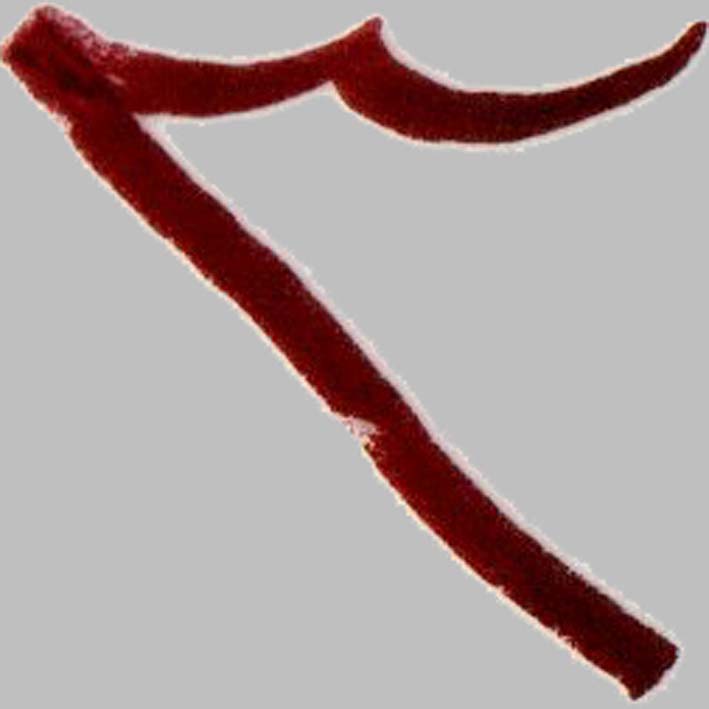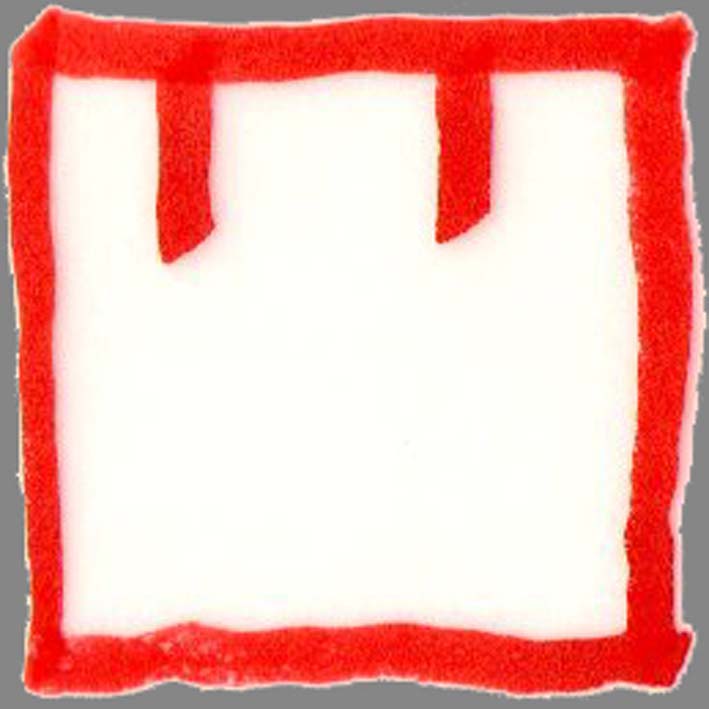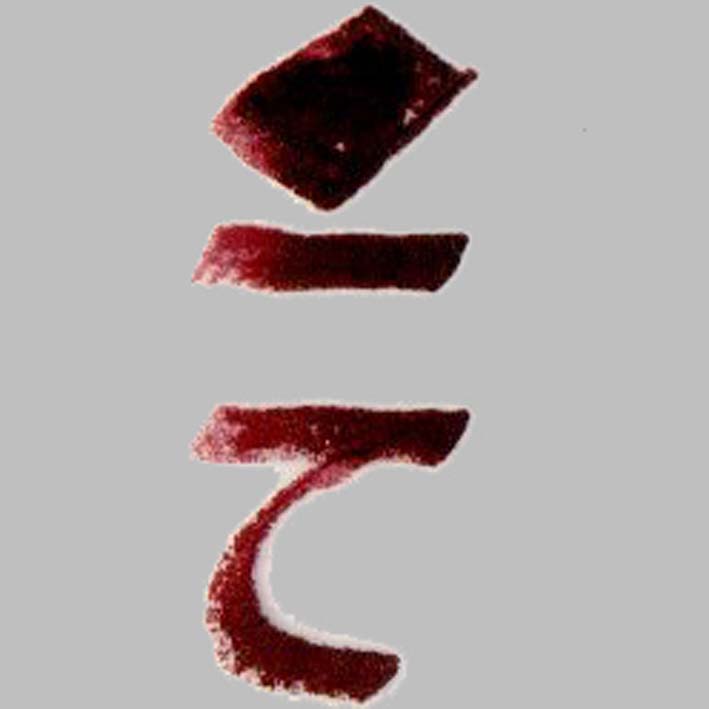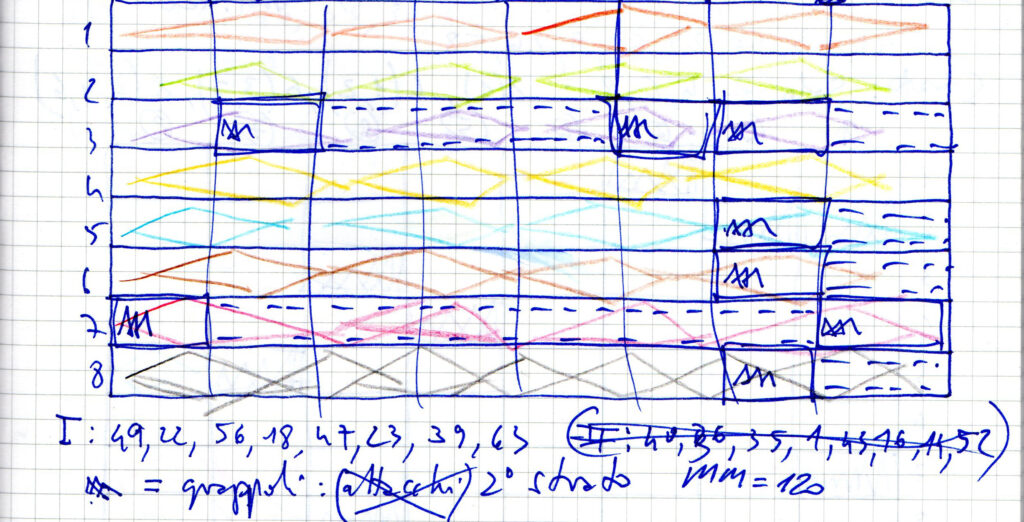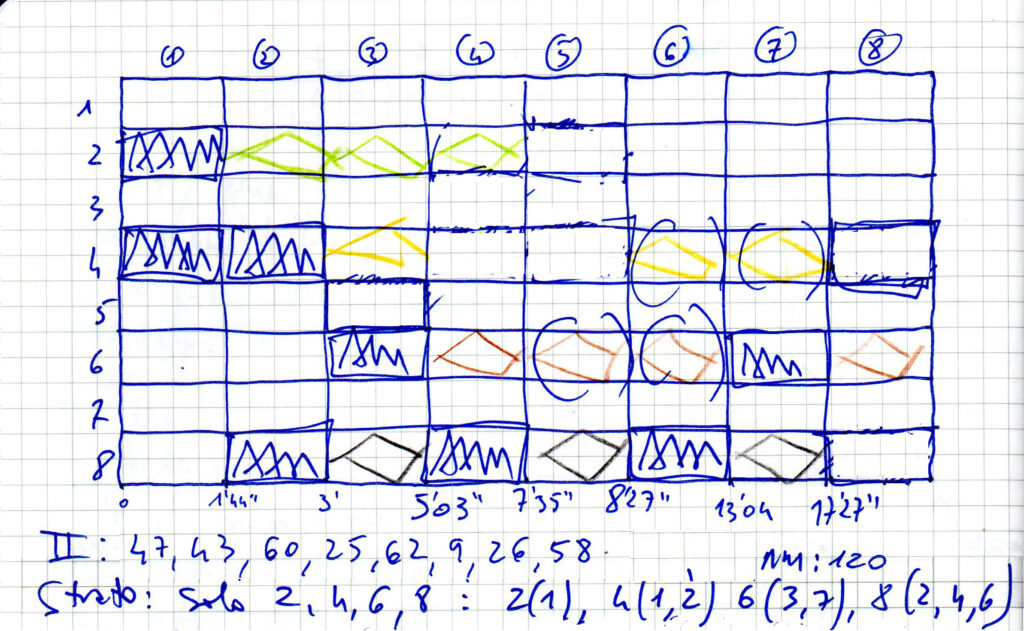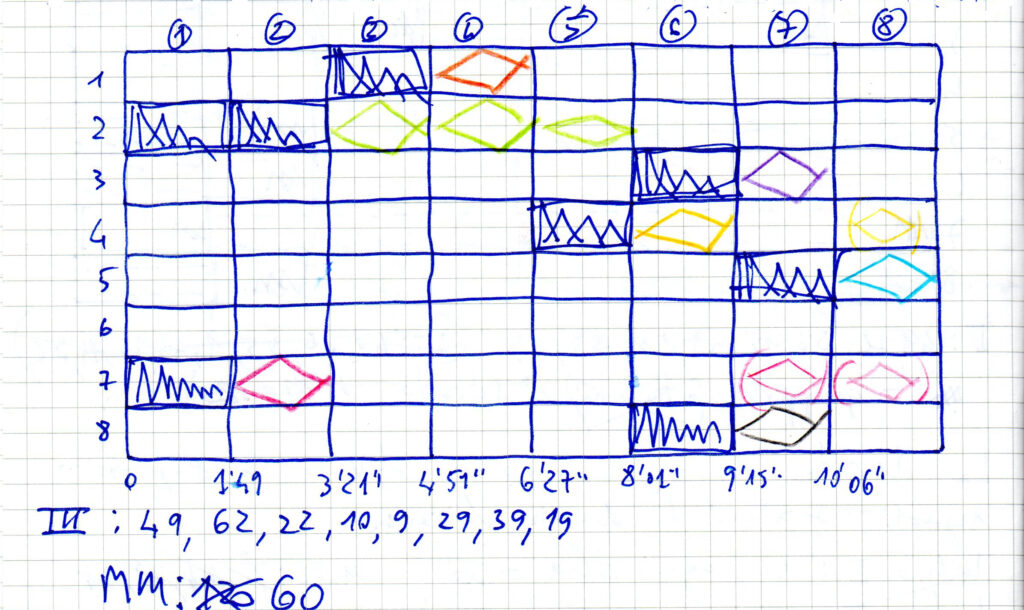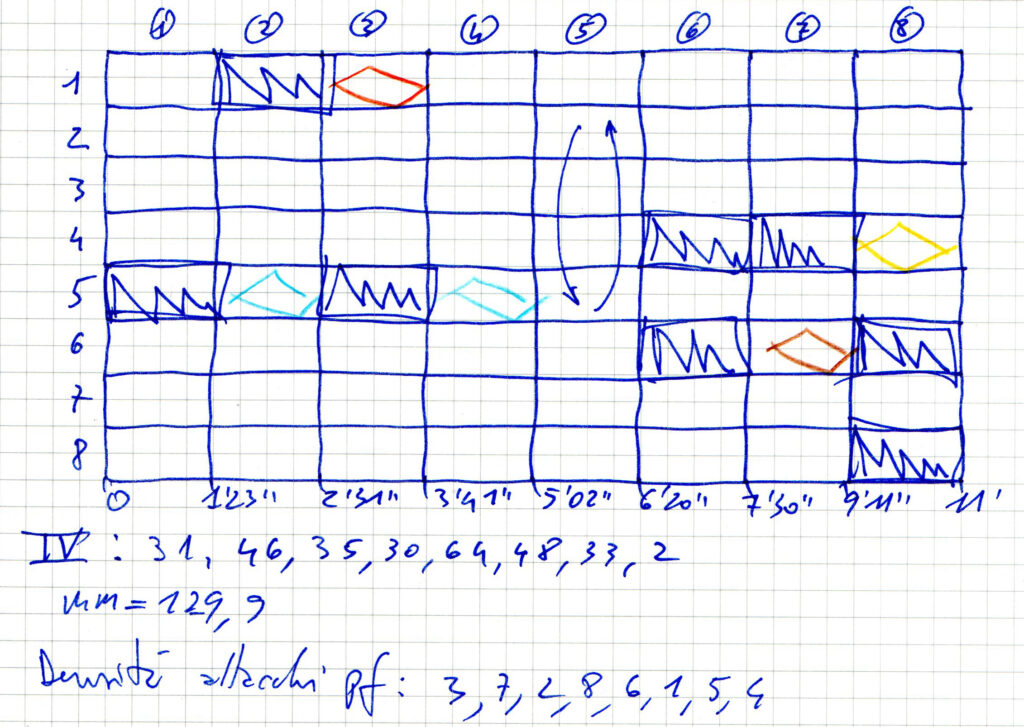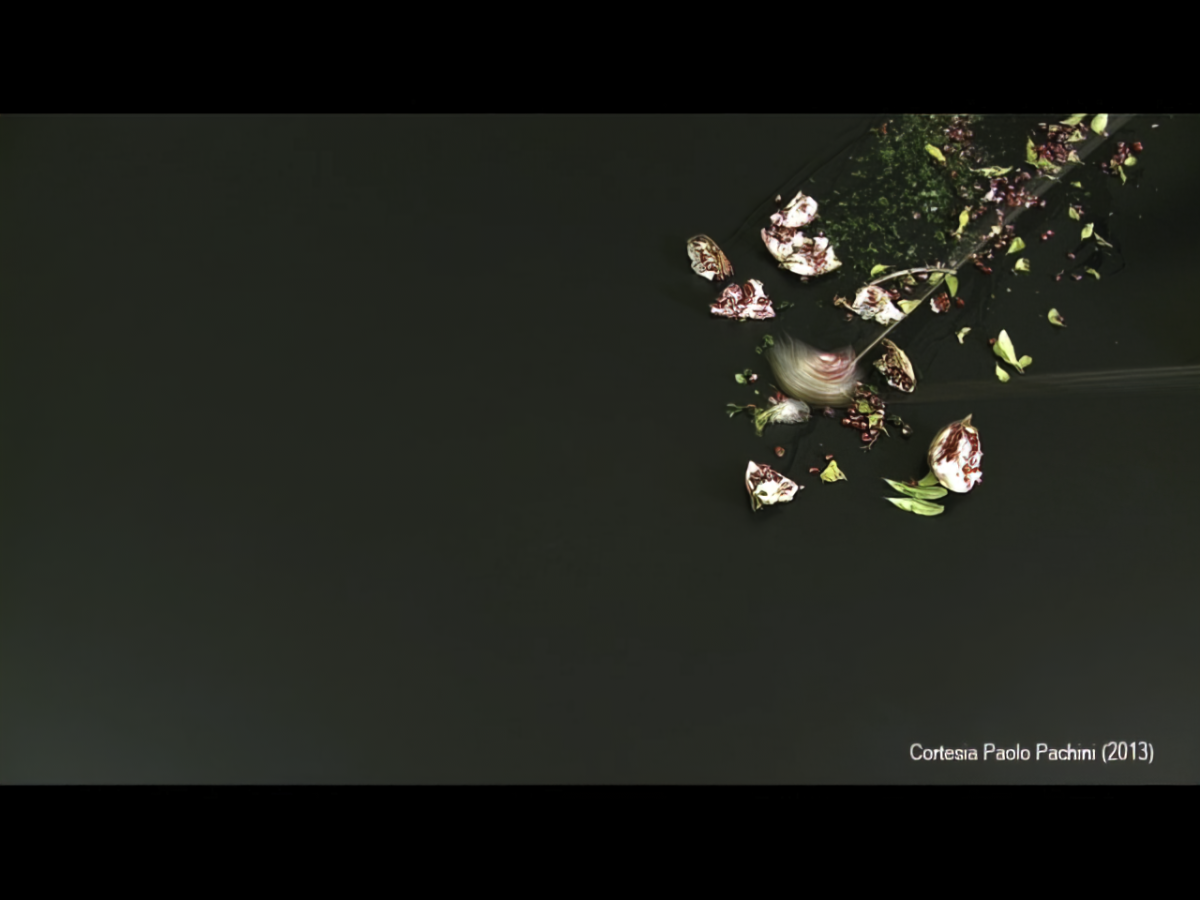(2024) electroacoustic music [60’]
The materials, the piano preparations, were chosen as one chooses shells while walking along a beach.
John Cage
For the composition of Teoria e pratica del cambiamento (2022) inspired by Cage’s Music of Changes (in four volumes), I had produced much more material than I used. The deconvolution of short excerpts from instrumental works of the II post -war period with short fragments of impulsive instrumental sounds followed the organization used by Cage: 4 ‘mobile’ matrices (one different for each volume) of 8 x 8. In total I therefore had 256 different deconvolutions of which only 32 were chosen (with aleatoric algorithm) for the composition. The great timbre and harmonic variety of these materials pushed me to use them for a new cycle. But what structural and formal criterion to follow? I then thought about how Cage himself had written in 1958 – Silence – about his Sonatas and Interludes: “Nothing about the structure was determined by the nature of the materials which were to occur in it; it was conceived, in fact, so that it could be as well expressed by the absence of these materials as by their presence.” So I decided to organize my materials simply by filling the duration of the 20 parts in which Sonatas and Interludes is structured and choosing them “as one chooses shells while walking along a beach”.


